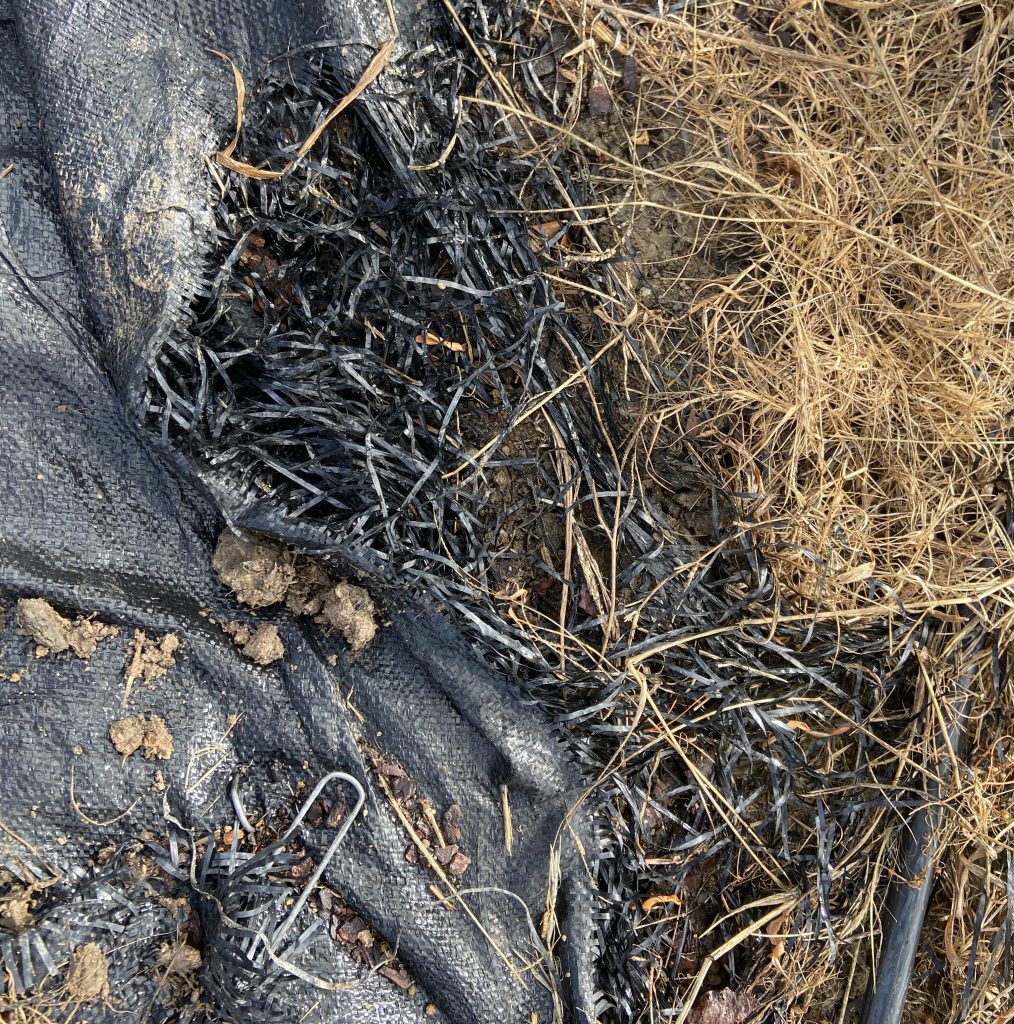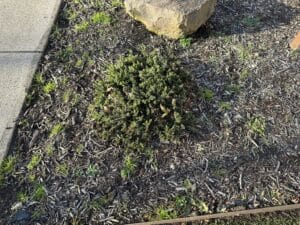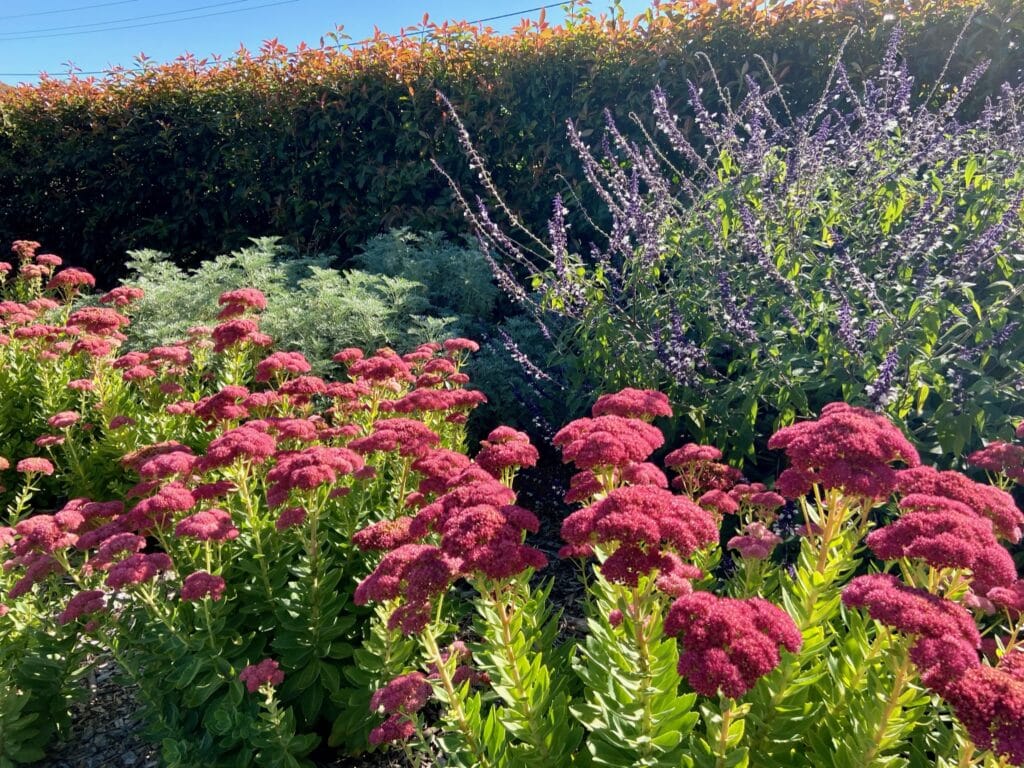5 reasons why you should ditch the weedmat
Weedmat is a widely used material in gardening and landscaping. It is designed to suppress weed growth, conserve moisture, and provide a clean appearance to outdoor spaces. However, despite its popularity, weedmat comes with a wide range of disadvantages and potential environmental consequences that must be taken into account. Here are some of the reasons why you should avoid using it in your garden.
1. Ineffective Weed Control
One of the main reasons people opt for weedmat is to combat weed growth. While it may initially seem like an effective solution, weedmat can often prove inadequate in controlling weeds in the long run. Weed seeds will usually germinate on top of the weedmat, pushing their roots down through the weedmat. These weeds are even more difficult to pull out than those growing directly in the soil! As the plastic deteriorates gaps will form, allowing weed seeds to find their way under the weedmat. As a result, gardeners may find themselves facing a worse weed problem than they initially had!
2. Impaired Soil Health
Weedmat restricts the flow of water, air, and nutrients to the soil beneath it. This impedes the natural processes necessary for maintaining healthy soil. Microorganisms that contribute to nutrient cycling and soil aeration are unable to access the soil, ultimately leading to a decline in soil fertility and overall plant health. The accumulation of organic matter on top of the weedmat can also result in the growth of fungi and bacteria that may further hinder soil health.
In addition the layer of black plastic on top of the soil results in the soil being superheated by the sun. Not only does this affect the root systems of plants, but also kills beneficial organisms in the soil and deters any more from taking up residence in the area. The heat and the lack of worms and beneficial insects has a further negative impact on soil health.
3. Water and Nutrient Runoff
As mentioned earlier, weedmat restricts the flow of water into the soil. This can lead to an increased runoff of water and nutrients during rainfall or irrigation. The water that cannot penetrate the plastic will often flow over the surface, carrying away valuable nutrients and increasing the risk of erosion. Such runoff not only wastes resources but also poses a threat to local water bodies by contributing to pollution and disrupting natural ecosystems.
4. Persistent Plastic Pollution
Weedmat is typically made from synthetic materials such as polypropylene or polyester, which do not readily compost in the environment. This means that when weedmat deteriorates or is removed, it leaves behind fragments of non-biodegradable plastic. These plastic particles can pose risks to wildlife, especially marine animals, through ingestion or entanglement. The accumulation of plastic waste in our ecosystems has become a significant environmental concern, and the use of weedmat contributes to this problem. We took this video recently, showing how much weedmat can deteriorate in only 1 year!
5. Limited Aesthetic Appeal
While weedmat may provide a neat appearance initially, its long-term visual appeal can diminish over time. The plastic often becomes visible as it ages, detracting from the natural beauty of the garden or landscape. Moreover, the accumulation of debris and organic matter on top of the weedmat can create an unsightly appearance that is challenging to clean or maintain.
At first glance weedmat may seem like a convenient solution for weed control and garden maintenance, but its disadvantages and environmental impact far outweigh its benefits. From ineffective weed control to impaired soil health, water and nutrient runoff, and the contribution to plastic pollution, the drawbacks of weedmat should not be overlooked. As gardeners and environmentally conscious individuals, it is essential to explore alternative methods for weed control and landscaping that prioritise sustainability and long-term ecosystem health.
If you would like some help making your garden more suitable for your family’s needs please get in touch – we’d love to help!







